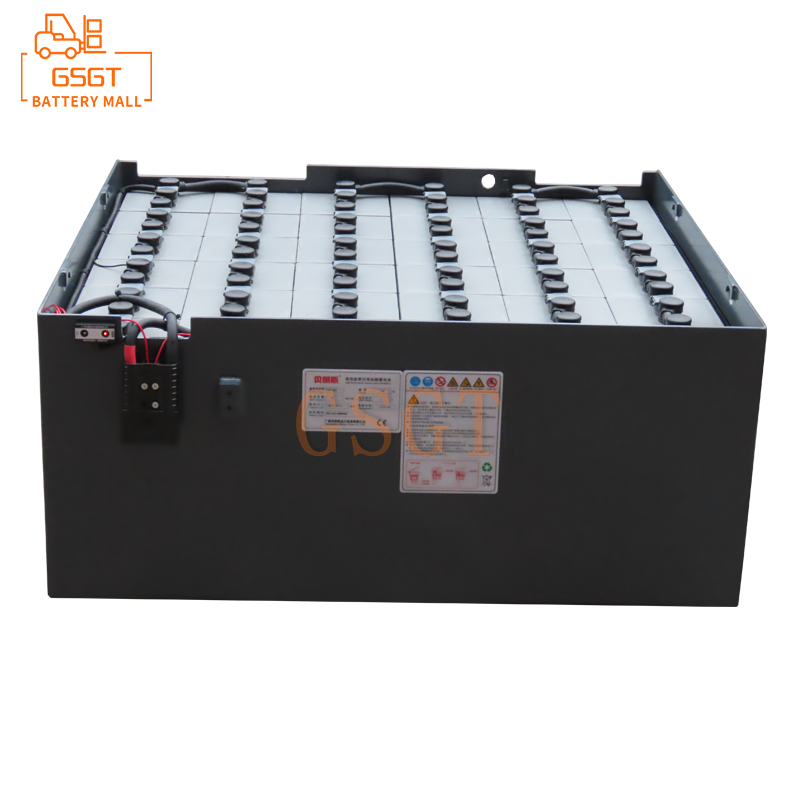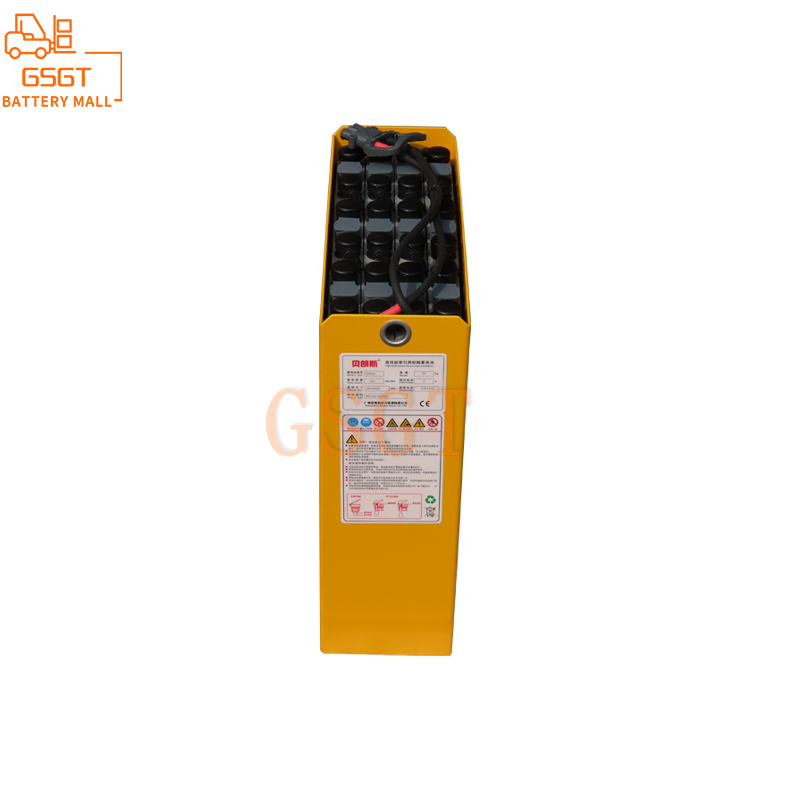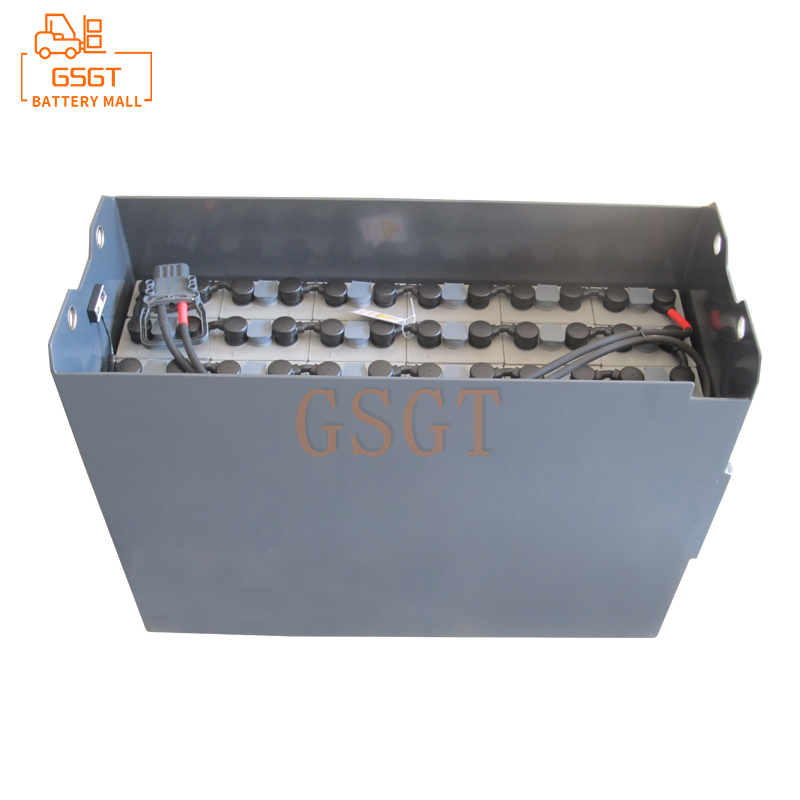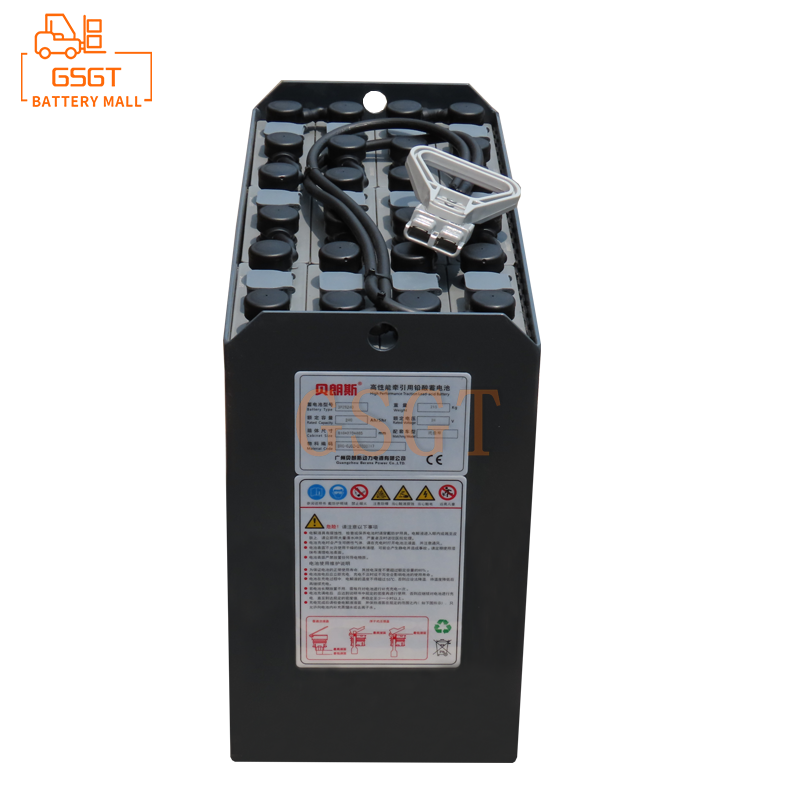Time:2025-06-06 10:22:04
Browse:603
In the modern logistics and warehousing industry, forklifts play a crucial role and are the core equipment for goods handling and stacking operations. The performance of lead-acid batteries, the power source of forklifts, directly affects the working efficiency, service life and operating costs of forklifts. Therefore, it is of vital importance to carry out scientific and standardized daily maintenance of lead-acid batteries in forklifts. This article will elaborate in detail on five key points for the daily maintenance of lead-acid batteries in forklifts, providing practical reference guidelines for forklift users and maintenance personnel.
1. Charging and Discharging Management: Grasp the "Golden Rule" of Charging and Discharging
Charging and discharging management is the foundation of forklift lead-acid battery maintenance and also a key link that determines the battery's service life. During the use of lead-acid batteries, it is necessary to follow the correct charging and discharging principles to avoid over-discharging and overcharging.
Over-discharge refers to the continued use of a battery when its power is too low, which can lead to sulfation of the battery plates, reducing the battery's capacity and performance. Generally speaking, when the forklift dashboard shows that the battery level remains at 20% to 30%, it should be charged in a timely manner. To determine more accurately whether a battery needs charging, it can also be determined by measuring the density of the battery's electrolyte. When the density of the electrolyte drops to 1.20-1.22g/cm³ (at 25℃), it also means that charging is required.
Overcharging can also cause damage to the battery. Overcharging can cause the battery to heat up, accelerate the aging of the internal plates and separators, and may also lead to excessive consumption of the electrolyte and deformation of the battery casing. Therefore, during the charging process, a charger that matches the battery specifications should be used and a reasonable charging time should be set. Under normal circumstances, the charging time of lead-acid batteries should not exceed 8 to 10 hours. Meanwhile, during the charging process, it is necessary to closely monitor the temperature and voltage changes of the battery. When the battery temperature exceeds 45℃, charging should be suspended and resumed only after the temperature drops. When the battery voltage reaches the specified termination charging voltage (generally 2.7-2.8V for a single battery and 16.2-16.8V for a 12V battery pack), charging should also be stopped.
In addition, to extend the battery's service life, it is recommended to perform deep discharge and equalization charging regularly. Deep discharge refers to completely discharging the battery before recharging, which is generally carried out once every 2 to 3 months. Equalization charging involves uniformly charging each individual battery in a battery pack to eliminate voltage differences among them. It is typically carried out every 3 to 6 months.
2. Liquid Level Monitoring: Maintaining the "healthy water level" of the electrolyte
The electrolyte inside a lead-acid battery is composed of sulfuric acid and distilled water, which plays a crucial role in the chemical reactions of the battery. During the use of the battery, due to the electrolytic water reaction and evaporation during charging, the electrolyte will gradually be consumed, causing the liquid level to drop. Therefore, regular inspection and replenishment of the electrolyte are important tasks in daily maintenance.
When checking the electrolyte level, it should be done when the battery is cooled. Generally speaking, the electrolyte level should be maintained 10 to 15mm above the battery plates or within the liquid level scale range marked on the battery casing. If the liquid level is too low, the plates will be exposed to the air, causing oxidation and sulfation of the plates and affecting the performance of the battery. If the liquid level is too high, the electrolyte may overflow during the charging process, corroding the battery casing and other components of the forklift.
When the electrolyte level is found to be too low, distilled water or special lead-acid battery replenishment fluid should be replenished in time. It should be noted that sulfuric acid solution must never be replenished. During the normal use of the battery, sulfuric acid will not be consumed. Replenishing sulfuric acid will cause the electrolyte concentration to be too high and damage the battery. When replenishing the electrolyte, add it slowly to avoid splashing. At the same time, ensure the purity of the replenishment solution to prevent impurities from entering the battery interior.
3. Cleaning and Maintenance: Creating a "Clean Home" for Batteries
Keeping the lead-acid batteries of forklifts clean not only enhances the performance and safety of the batteries but also extends their service life. Dust, dirt and electrolyte residue on the battery surface can easily cause a short circuit between the positive and negative electrodes of the battery, affecting its normal operation and even leading to safety accidents such as fires.
It is necessary to clean the battery regularly. When cleaning, the battery should be disconnected from the forklift first to ensure operational safety. The surface of the battery can be wiped with a clean damp cloth to remove dust and dirt. For stubborn stains and electrolyte residues, a baking soda solution (dissolve an appropriate amount of baking soda in water) can be used for cleaning, then rinse thoroughly with clean water and dry. During the cleaning process, be careful to prevent water from entering the battery interior. At the same time, do not use metal tools to avoid scratching the battery casing.
In addition, it is necessary to check the connection wires and terminals of the battery to ensure that they are firmly connected without any loosening, oxidation or corrosion. If oxidation or corrosion is found on the connecting wires or terminals, you can gently sand them with sandpaper to remove the oxide, and then apply an appropriate amount of Vaseline or special conductive paste to prevent further oxidation and corrosion and ensure a good electrical connection.
4. Temperature Control: Creating a Suitable "working Environment"
The performance and lifespan of lead-acid batteries are greatly affected by temperature. Both excessively high and low temperatures can have adverse effects on the charging and discharging efficiency, capacity and service life of batteries. Therefore, controlling the working temperature of the battery and creating a suitable working environment for it are important aspects of daily maintenance.
In high-temperature environments, the chemical reaction rate of batteries increases, which can cause the battery to overheat, accelerate the aging of the internal plates and separators of the battery, and also speed up the evaporation of the electrolyte, shortening the service life of the battery. Therefore, in summer or high-temperature working environments, it is necessary to pay attention to cooling the battery. Measures such as increasing ventilation and avoiding direct sunlight can be taken. If necessary, cooling devices can also be used to cool down the battery.
In a low-temperature environment, the electrolyte of a battery thickens, and the ion migration rate slows down, resulting in a decline in the battery's charging and discharging performance and a reduction in capacity. To ensure the normal operation of the battery in low-temperature environments, it is necessary to keep the battery warm in winter or low-temperature areas. Batteries can be wrapped with insulating materials or stored in a warm room. At the same time, when charging in a low-temperature environment, the charging current should be appropriately reduced and the charging time extended to improve the charging efficiency and battery performance.
5. Regular Inspection and Maintenance: Timely identify and resolve potential issues
In addition to the above four key points, it is also indispensable to conduct a comprehensive inspection and maintenance of the lead-acid batteries of forklifts on a regular basis. Regular inspections can promptly identify potential problems with the battery, and corresponding measures can be taken to repair and handle them, preventing the issues from escalating and affecting the normal use of the battery.
The regular inspection items include the appearance of the battery, voltage, capacity, electrolyte density, connecting wires and terminals, etc. When inspecting the appearance of the battery, it is necessary to check whether the battery casing has any damage, deformation, leakage or other phenomena. To measure battery voltage and capacity, professional battery testing equipment can be used to understand the actual performance of the battery. Detect the density of the electrolyte to determine the charging status and health condition of the battery; Check the connecting wires and terminals to ensure they are securely connected and free from any abnormalities.
Problems found during the inspection should be dealt with promptly. For example, if minor damage to the battery casing is found, it can be repaired with special repair materials. If the battery capacity drops significantly, it is necessary to analyze the reasons. It may be due to battery aging, sulfation of the plates and other issues. Corresponding repair measures should be taken, such as activation treatment or battery replacement. If the connecting wires or terminals are loose or oxidized, they should be tightened and cleaned in time.
In conclusion, the daily maintenance of lead-acid batteries in forklifts is a meticulous and crucial task, involving multiple aspects such as charging and discharging management, liquid level monitoring, cleaning and maintenance, temperature control, and regular inspections. Only by grasping these five key points and conducting scientific and standardized maintenance on batteries can the service life of batteries be prolonged, the working efficiency of forklifts be improved, operating costs be reduced, and reliable power support be provided for the logistics and warehousing operations of enterprises. Meanwhile, with the continuous development of technology, new battery technologies are constantly emerging. Forklift users and maintenance personnel should also pay attention to industry trends, learn and master new knowledge and technologies to better adapt to future development needs.

$4045

$1270

$2040

$880

MESSAGE
Professional And Efficient
Security
Affordable Price
Professional Services